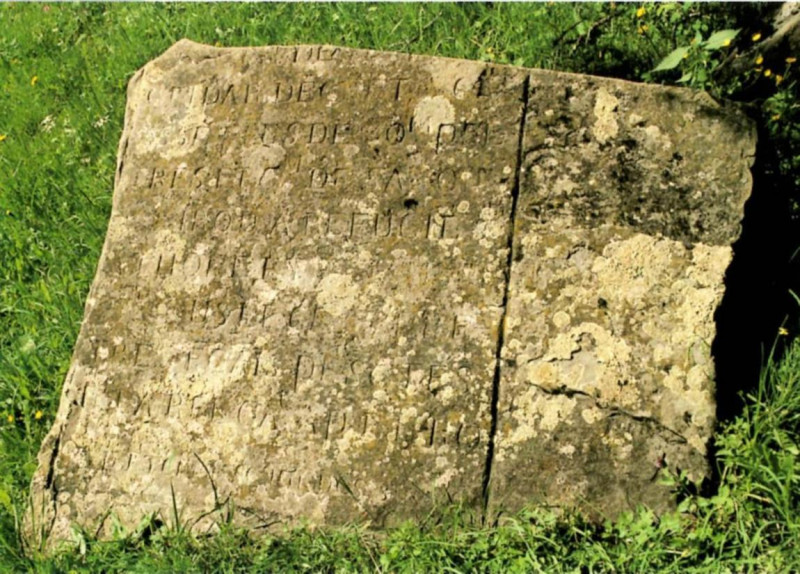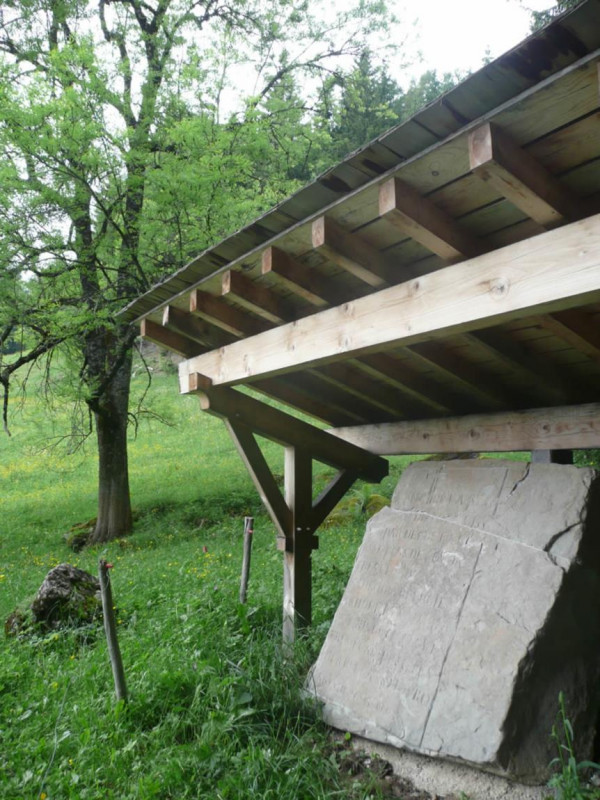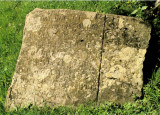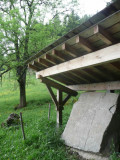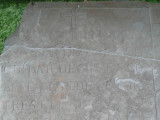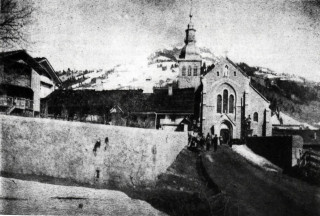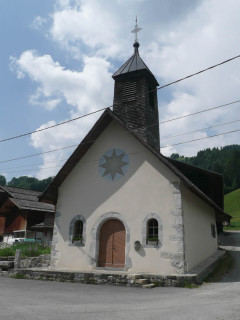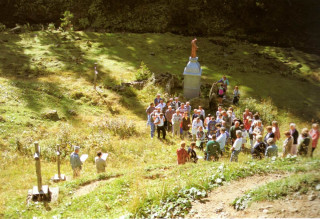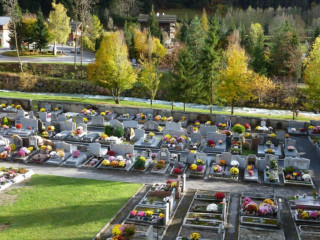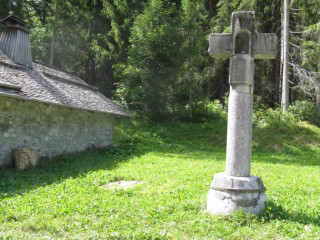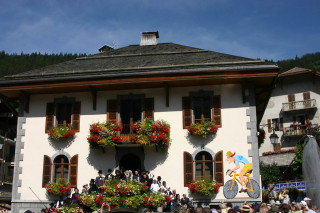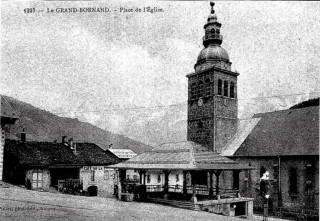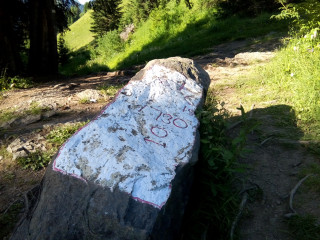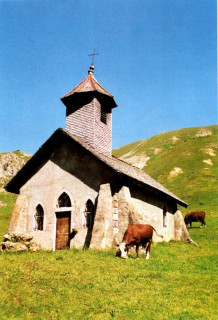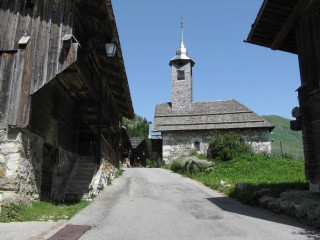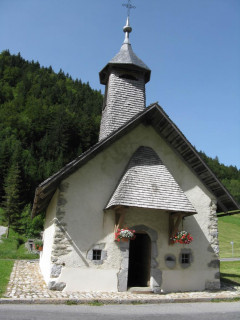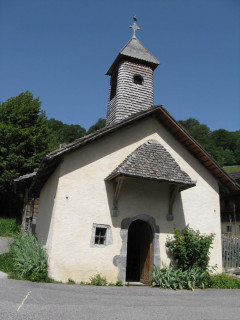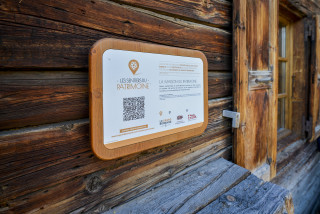The Saix Stone
Contact
au dessus du hameau de Lormay
Vallée du Bouchet
74450
Le Grand-Bornand
Phone : +33 4 50 02 79 18
At the end of the Bouchet valley, just above the hamlet of Lormay, there is a stone testifying to events which took place during the French Revolution : priests refusing to swear allegiance to the Constitution were hidden by the local population.
The French revolutionaries arrived in Savoie in September 1792. They met with local opposition, such as the siege of Thônes in May 1793 and deliberate procrastination concerning drafting, requisitioning of hay, etc... At the beginning of 1794, Albitte, the French representative for the Department of Mont Blanc, ordered the destruction of all onion-shaped steeples and the melting down of bells.
As anticlerical policies developed, priests were required to swear allegiance to the new French constitution. A large number of them refused and either went into exile or were hidden in homes by the fervently Catholic population. The Capuchin priest, Perillat-Charlaz, hid at the Châtillon, Reverand Angelloz hid in the Bouchet valley and Reverand Renévrier, the parish priest, said mass at Le Cornillon in the summer and at Le Villard in the winter.
Three other priests were hidden by a widow named Janin at a place called Sous le Cey (meaning « under the rock »), near Lormay. The inscription reads : « Year (undated) of the French Republic, which outlawed by decree more than 40,000 priests and 6000 in Savoie. Madame Girod sheltered 5 months in Thônes and widow Janin 7 months under the Cey, three persecuted French priests : Pierre Larel, Cataptro, JPJ Terrasse - one of the three (engraved the stone) ».
As anticlerical policies developed, priests were required to swear allegiance to the new French constitution. A large number of them refused and either went into exile or were hidden in homes by the fervently Catholic population. The Capuchin priest, Perillat-Charlaz, hid at the Châtillon, Reverand Angelloz hid in the Bouchet valley and Reverand Renévrier, the parish priest, said mass at Le Cornillon in the summer and at Le Villard in the winter.
Three other priests were hidden by a widow named Janin at a place called Sous le Cey (meaning « under the rock »), near Lormay. The inscription reads : « Year (undated) of the French Republic, which outlawed by decree more than 40,000 priests and 6000 in Savoie. Madame Girod sheltered 5 months in Thônes and widow Janin 7 months under the Cey, three persecuted French priests : Pierre Larel, Cataptro, JPJ Terrasse - one of the three (engraved the stone) ».
From 01/06 to 30/10 : open daily.
Description
- Religious heritage :
- Religious heritage
- Period :
- 18th C
Facilities and services
- SITRA services :
- Services
- Services
- Services
- Services
- Services
- Services
To note
- Type of SITRA offer :
- Not recommended in bad weather
- Open air
Localisation
FICHE_INFO_SIMPLE_LIBELLE_DESTINATION
La pierre du Saix
au dessus du hameau de Lormay
Vallée du Bouchet
74450
Le Grand-Bornand
GPS coordinates
Latitude : 45.948924
Longitude : 6.500666
View also
After 60 years of building work, undertaken and financed by the local community,it was consecrated in 1877. Built in the neo-gothic style of the XIX century, the architecture is typical of the golden age of the Catholic church.
The chapel of Le Bouchet, in the heart of the Bouchet valley, was founded in 1704 after a flood. It boasts a beautiful altarpiece, dating back to the XVIII century.
The Stations of the Cross pilgrimage at La Duche originated in 1888, linking the chapel of La Duche with St Bruno's oratory, the site of a miraculous spring.
The original cemetery was situated for a long time immediately around the church. In the mid-XX century, it had to be relocated so that a new village square could be built in front of the Tourist Office, the Town Hall and the church.
The cross at Le Clos du Pin is unusual for two reasons : firstly, this stone cross is the oldest of all the Le Grand Bornand crosses (dating from 1500) and secondly, and for the same reason, it has been classified since 1944 as a heritage monument.
The Town Hall is a stone building, typical of early XX century architecture. It houses all the municipal services and the meeting room for the village council.
The weekly market at the Grenette, the old grain market of Le Grand Bornand, characterizes the heart of the old town square. All sorts of concerts and events also take place here, such as concerts given by the local brass band and many local celebrations.
The inscribed border stone, at the foot of the dale of Tardevant, marks the limit between the villages of Le Grand Bornand and La Clusaz. This stone is about 1m. long and is dated 1755.
The chapel of la Duche is the oldest of Grand Bornand. Based in the end of the XVIIth century,it is reconstructed at the end of the XIXth century. Itis dedicated in particular to several agrarian saints: saint Anne, saint Grat and saint Guérin.
Founded in 1677, the chapel is nestled in the heart of the old village of Le Chinaillon. Despite major renovation work to the building in 1977, it has retained its traditional appearance.
Located in the heart of the hamlet of Les Plans, the chapel of the same name was founded in 1702 after the flooding of the Borne river. From the chapel there is a wonderful view over the Aravis mountain chain.
Standing above the village of Le Grand Bornand, with panoramic views over the Aravis chain, the chapel of Le Nant Robert is well worth seeing. It was founded in 1762 and renovated on several occasions during the course of the XX century.
04 50 02 78 00
During your walks, use your mobile phone to discover in an interactive way all the richness of Le Grand-Bornand.

